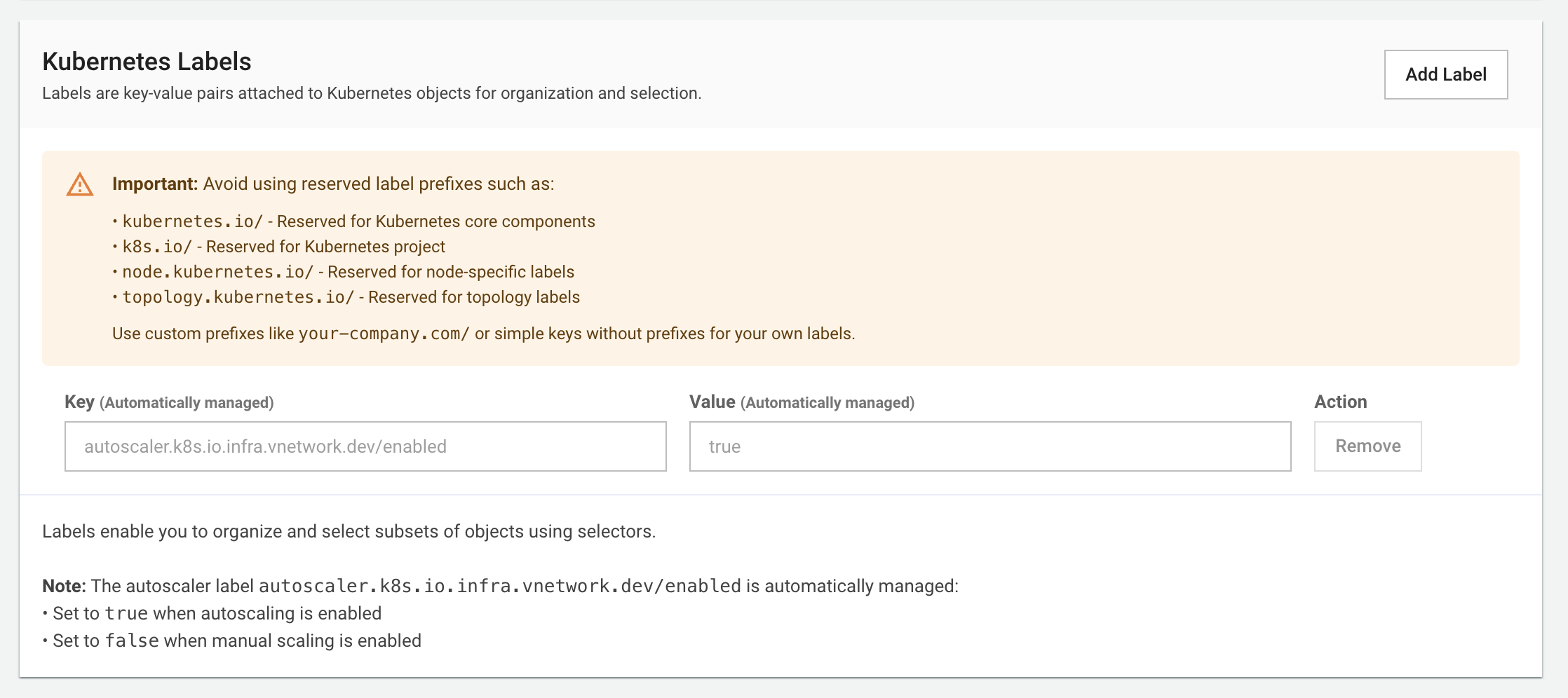Pool Scaling
Adjust NodeGroup capacity by scaling nodes up or down based on workload demands.
Scaling Operations
Scale Up - Add nodes to increase capacity Scale Down - Remove nodes to reduce capacity and costs Right-sizing - Adjust size to match usage patterns
Scaling Constraints
- Minimum: 1 node for worker NodeGroups
- Maximum: 10 nodes per NodeGroup
- NodeGroup must be in "Ready" state
- Subject to vCloud quota limits
NodeGroup Configuration
Basic Information
When editing a NodeGroup, you can modify basic configuration settings including name and description.
 NodeGroup edit interface showing basic information and description fields
NodeGroup edit interface showing basic information and description fields
Scaling Configuration
Configure the minimum and maximum number of nodes for scaling operations. The system validates that maximum nodes cannot exceed 10 and must be greater than or equal to minimum nodes.
 Scaling configuration interface with minimum/maximum nodes and autoscaling options
Scaling configuration interface with minimum/maximum nodes and autoscaling options
Configuration Options:
- Minimum Nodes: Set the minimum number of nodes (cannot be less than 1)
- Maximum Nodes: Set the maximum number of nodes (cannot exceed 10)
- Autoscaling: Choose between Manual Scaling and Auto Scaling modes
- Validation: Real-time validation ensures proper configuration
Advanced Configuration
Resource Tags
Add tags to organize and identify your NodeGroup resources. Tags are key-value pairs that help with resource management and billing.
 Tags configuration interface for resource organization and identification
Tags configuration interface for resource organization and identification
Kubernetes Labels
Configure Kubernetes labels for node organization and pod scheduling. The autoscaler label is automatically managed by the system.
 Kubernetes labels configuration including autoscaler settings
Kubernetes labels configuration including autoscaler settings
Important Label:
autoscaler.k8s.io.infra.vnetwork.dev/enabled: Automatically managed for autoscaling- Set to
truewhen autoscaling is enabled - Set to
falsewhen manual scaling is enabled
- Set to
Node Taints
Configure node taints to control pod scheduling and ensure workloads are placed on appropriate nodes.
 Node taints configuration for controlling pod scheduling
Node taints configuration for controlling pod scheduling
Taint Effects:
- NoSchedule: Prevents new pods from being scheduled
- PreferNoSchedule: Avoids scheduling new pods when possible
- NoExecute: Evicts existing pods that don't tolerate the taint
Scaling Process
- Access NodeGroup: Navigate to your cluster and select the NodeGroup
- Edit Configuration: Click edit to access scaling settings
- Adjust Limits: Modify minimum and maximum node counts
- Configure Autoscaling: Choose between manual or automatic scaling
- Apply Changes: Save configuration to enable new scaling limits
When to Scale
Scale Up
- Increased workload demands
- Performance bottlenecks
- Capacity planning
- High availability requirements
Scale Down
- Cost optimization
- Low resource utilization
- Maintenance activities
- Resource reallocation